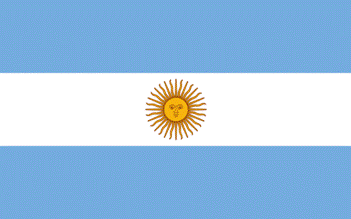Debt in Argentina - case study

The following examines the effect of debt on the economy of Argentina and how this debt contributed to economic crisis.
 An
example of debt playing a role in economic crisis was the Argentine
economic crisis. During the 1980s, Argentina, like many Latin American
economies, experienced hyperinflation. As a part of the process put in
place to bring inflation under control, a fixed exchange rate was put
into place between Argentina's new currency and the US Dollar. This
guaranteed that inflation would not restart, since for every new unit
of currency issued by the Argentine Central Bank, the Central Bank had
to hold a US Dollar against this - therefore in order to print more
Argentine currency, the government required additional US Dollars.
Before this currency regime was in place, if the government had needed
money to finance a budget deficit, it could simply print more money
(thus creating inflation). Under the new system, if the government
spent more than it earned through taxation in a given year, it needed
to cover the gap with US Dollars, rather than by simply printing more
money. The only way the Government could get these US Dollars to
finance the gap was through higher tax of exporters' earnings or
through borrowing the needed US Dollars. Of course a fixed exchange
rate was incompatible with a structural (i.e. recurrent) budget
deficit, as the government needed to borrow more US Dollars every year
to finance its budget deficit; eventually leading to an unsustainable
amount of US Dollar debt.
An
example of debt playing a role in economic crisis was the Argentine
economic crisis. During the 1980s, Argentina, like many Latin American
economies, experienced hyperinflation. As a part of the process put in
place to bring inflation under control, a fixed exchange rate was put
into place between Argentina's new currency and the US Dollar. This
guaranteed that inflation would not restart, since for every new unit
of currency issued by the Argentine Central Bank, the Central Bank had
to hold a US Dollar against this - therefore in order to print more
Argentine currency, the government required additional US Dollars.
Before this currency regime was in place, if the government had needed
money to finance a budget deficit, it could simply print more money
(thus creating inflation). Under the new system, if the government
spent more than it earned through taxation in a given year, it needed
to cover the gap with US Dollars, rather than by simply printing more
money. The only way the Government could get these US Dollars to
finance the gap was through higher tax of exporters' earnings or
through borrowing the needed US Dollars. Of course a fixed exchange
rate was incompatible with a structural (i.e. recurrent) budget
deficit, as the government needed to borrow more US Dollars every year
to finance its budget deficit; eventually leading to an unsustainable
amount of US Dollar debt.
Argentina's debt grew continuously during the 1990s, climbing above $120 billion USD. As a structural budget deficit continued, the government kept borrowing more, creditors continued to lend money, while the IMF suggested less state spending to stop the government's ongoing need to keep borrowing more and more. As the debt pile grew, it became increasingly obvious the government's structural budget deficit was simply not compatible with a low inflation fixed exchange rate - either the government had to start earning as much as it spent, or it had to start (inflationary) printing of money (and thus abandoning the fixed exchange rate as it would not be able to borrow the needed amounts of US Dollars to keep the exchange rate stable). Investors started to speculate that the government would never stop spending more than it earned, and so there was only one path for the government - inflation and the abandonment of the fixed exchange rate. In a similar fashion to Black Wednesday, investors began to sell the Argentine currency, betting it would become worthless against the US Dollar when the inevitable inflation started. This became a self-fulfilling prophecy, quickly leading to the government's US Dollar reserves being exhausted. The crisis exploded in December 2001. In 2002, a default on about $93 billion of the debt was declared. Investment fled the country, and capital flow towards Argentina ceased almost completely.
The Argentine government met severe challenges trying to refinance the debt. Some creditors denounced the default as sheer robbery. Vulture funds who had acquired debt bonds during the crisis, at very low prices, asked to be repaid immediately. For four years, Argentina was effectively shut out of the international financial markets.
Argentina finally got a deal by which 77% of the defaulted bonds were exchanged by others, of a much lower nominal value and at longer terms. The exchange was not accepted by the rest of the private debt holders, who continue to challenge the government to repay them a greater percentage of the money which they originally loaned. The holdouts have formed groups such as American Task Force Argentina to lobby the Argentine government, in addition to seeking redress by attempting to seize Argentine foreign reserves.
Source: Wikipedia